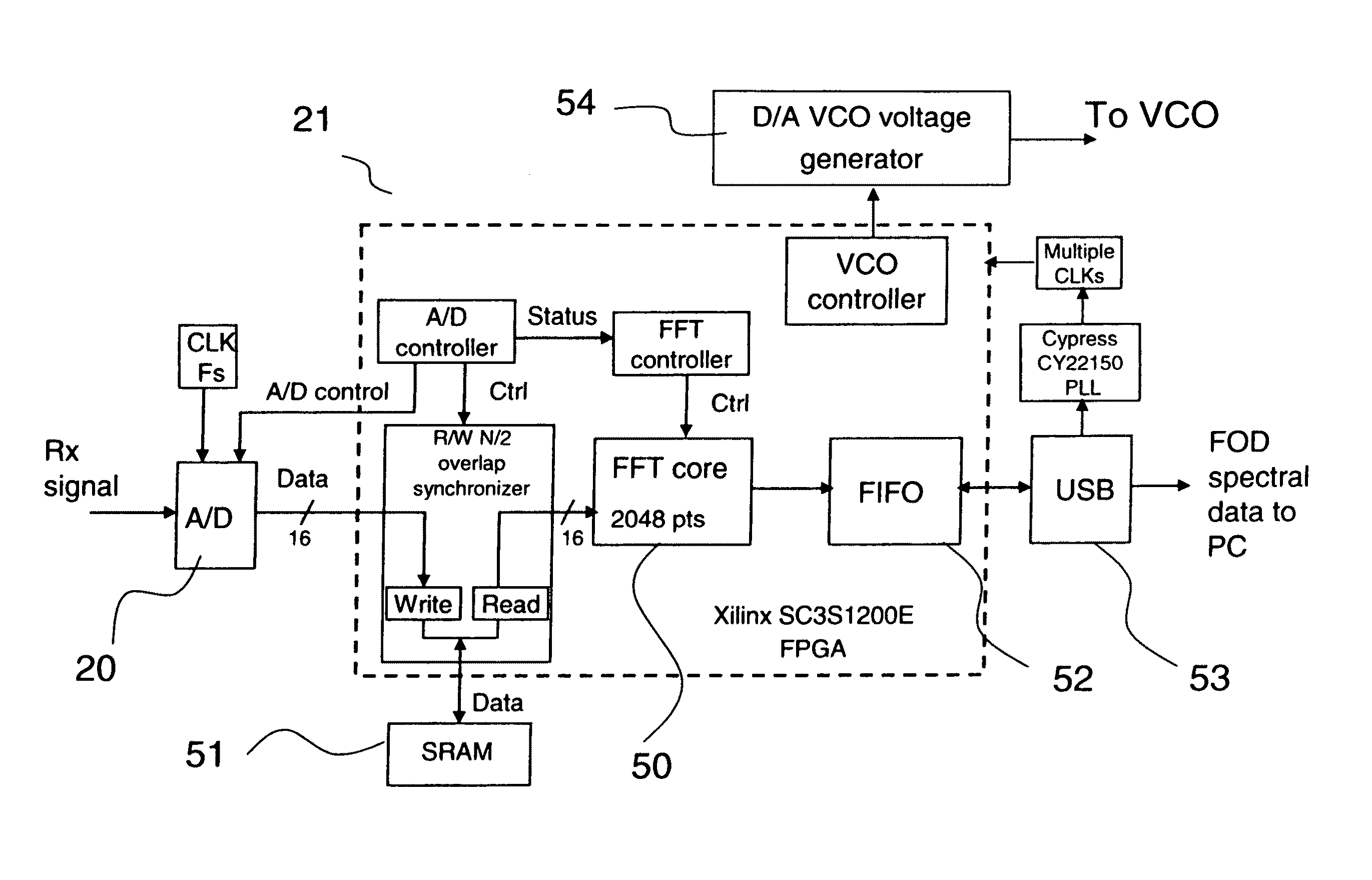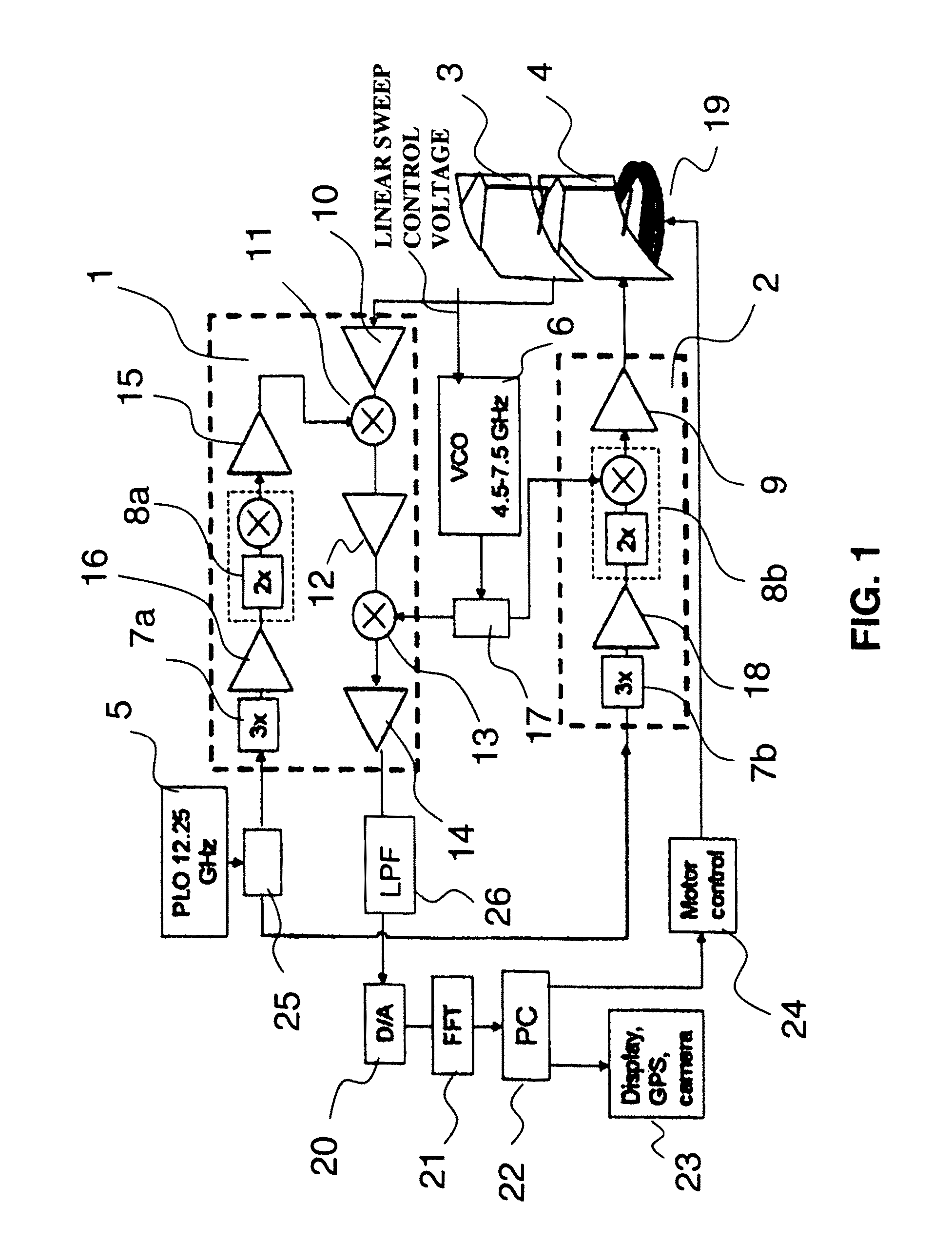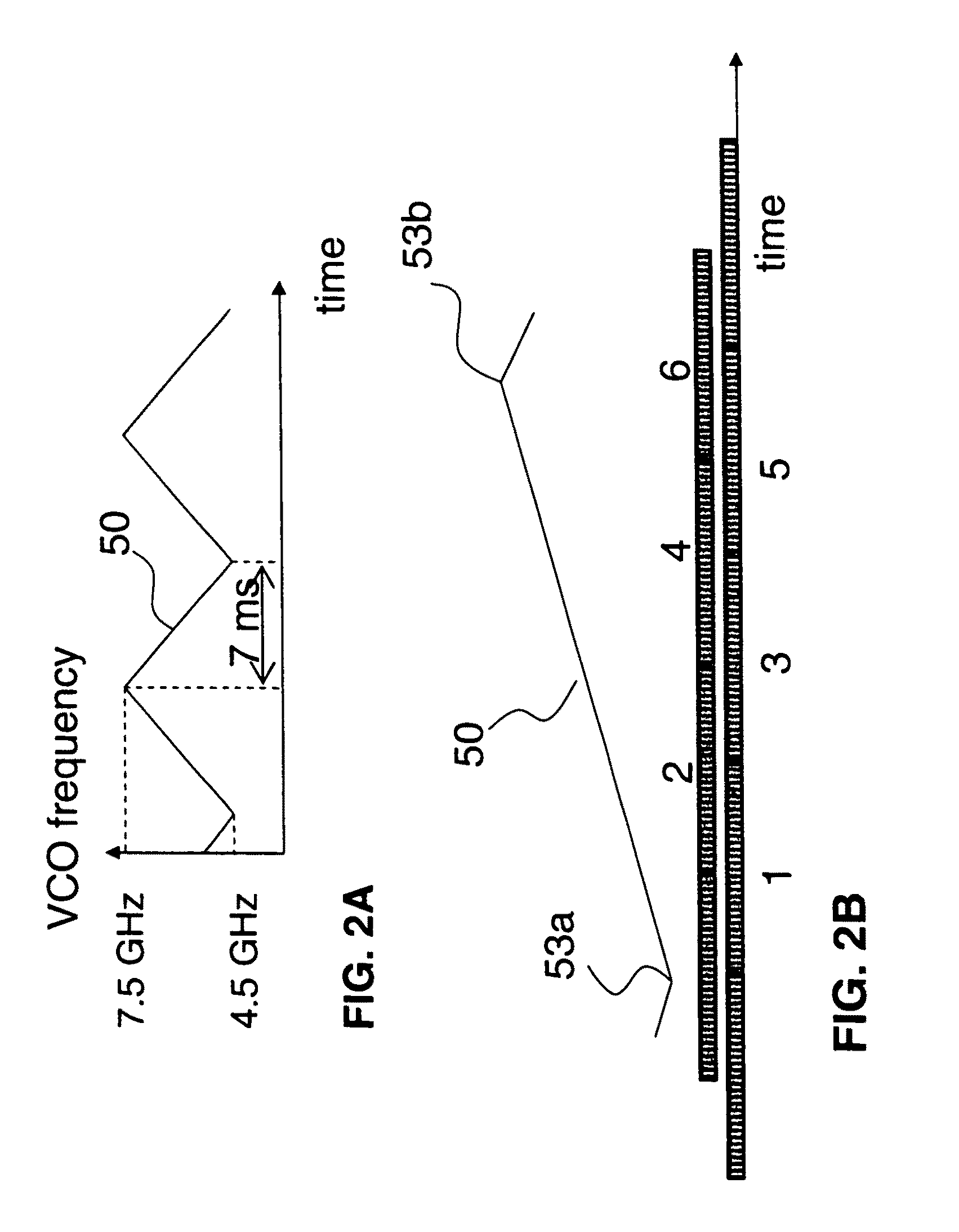Millimeter wave surface imaging radar system
a radar system and millimeter wave technology, applied in the field of radar systems, can solve the problems of significant hazard to the safety of air traffic, large distances of radiation at these millimeter wave wavelengths, and loss of human life, and achieve reliable and effective fod detection and large scan coverage
- Summary
- Abstract
- Description
- Claims
- Application Information
AI Technical Summary
Benefits of technology
Problems solved by technology
Method used
Image
Examples
first preferred embodiment
[0034]The preferred embodiment of the present invention is described in FIGS. 1 through 9. This embodiment is a three dimensional W-band Frequency Modulated Continuous Wave (FMCW) active imaging radar system. The system is capable of accurately determining the bearing and range to foreign objects on the airport surfaces and displaying this information to system operators. The system has up to 200 meters (600 feet) operation range and has to be driven around in order to detect FOD in larger areas.
[0035]The radar of the system consists of a millimeter wave transmitter, receiver, one each transmit and receive prime focus reflector antennas, receiver signal digitizer and FFT processor. The transmit antenna and the receive antenna have similar configurations. They form narrow co-aligned / overlapping beams which are 0.85 degree wide (spreading from several inches in the near field) in the vertical directions and 0.34 degree wide (spreading from about two feet in the near field) in the hori...
PUM
 Login to View More
Login to View More Abstract
Description
Claims
Application Information
 Login to View More
Login to View More - R&D
- Intellectual Property
- Life Sciences
- Materials
- Tech Scout
- Unparalleled Data Quality
- Higher Quality Content
- 60% Fewer Hallucinations
Browse by: Latest US Patents, China's latest patents, Technical Efficacy Thesaurus, Application Domain, Technology Topic, Popular Technical Reports.
© 2025 PatSnap. All rights reserved.Legal|Privacy policy|Modern Slavery Act Transparency Statement|Sitemap|About US| Contact US: help@patsnap.com



